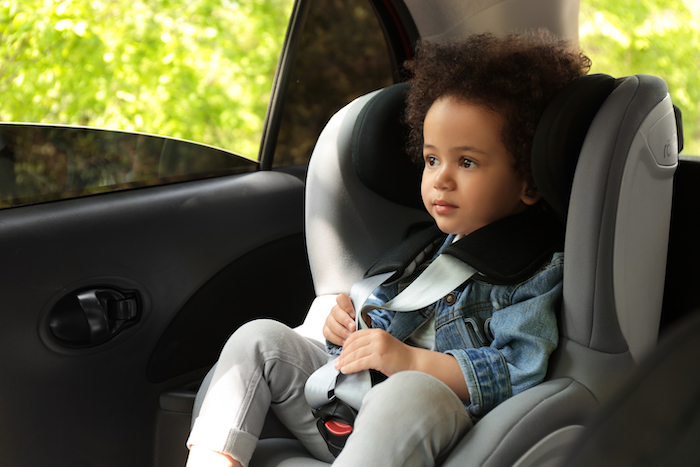When Can A Baby Face Forward in a Car Seat?

In UK law, children must use a child seat until they’re either 12 years old or 135cm tall, whichever comes first. But there are different types of car seats available and rules about which seats children and babies should use.
Babies should start off using a rear-facing car seat and will ultimately end up in a booster seat.
When Can a Baby Face Forward in a Car Seat?
Child car seats must be rear-facing until your child is over 15 months old.
If you’re fitting a rear-facing baby seat in your front passenger seat, you must deactivate any front airbags. And you should never fit a child car seat in a side-facing seat.
Weight-Based Seats and Car Seat Groups
When it comes to weight-based seats, seats in groups 0 and 0+, which are designed for weights between 0kg and 13kg, will generally be rear-facing seats. It’s only when you get to groups 1, 2, and 3, which are designed for weights between 9kg and 36kg, that you’ll start to see forward-facing seats.
The NHS has detailed guidance on child car seat safety, including information on when babies can start using forward-facing seats.
What Type of Car Seat Do I Need?
Only EU-approved seats can be used in the UK. Look for a label showing a capital “E” in a circle, and a code – such as R129, or ECE R44.
Choose your car seat based on your child’s height or weight.
Height-based seats are called i-size seats, and they’re subject to specific regulations. Weight-based seats are organised into five different groups (0, 0+, 1, 2 and 3), and seats in each group are designed for different weights and different stages of your child’s development.
Read our guide to the different types of child car seats that are available, and how each is suited to different heights and weights.
But these are just general guidelines. Be sure to read the official government rules on child car seats.
When Children Can Travel Without a Car Seat?
There are some rare exceptions for when children can travel without a car seat:
In a taxi, minicab, minibus, coach or van.
On an unexpected journey, such as an emergency.
If there’s no room for another car seat.
But in most cases, children must use a car seat – especially if they’re under three years old.
Child Car Seats – Further Resources
We have lots of resources on our site relating to child car seats:
For official guidance, head to the NHS, the government, or road safety charity ROSPA.
Which? also has a good consumer guide to choosing the right car seat for your baby and your vehicle.
Specialist Car Insurance Cover For Child Car Seats
We have car insurance policies specifically designed to meet the needs of parents.
For instance, if you have a child’s car seat is fitted in your vehicle and you are involved in an accident, or if it is damaged following a fire or theft, we will pay towards the cost of a replacement seat. We’ll even do this if it doesn’t appear to be damaged. Head here for more information.







